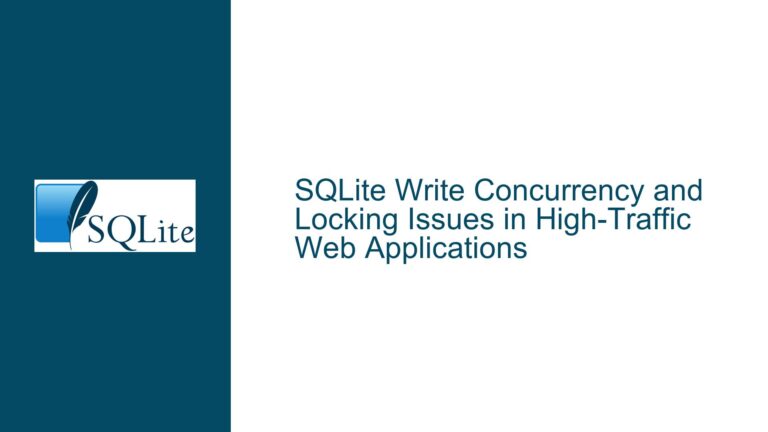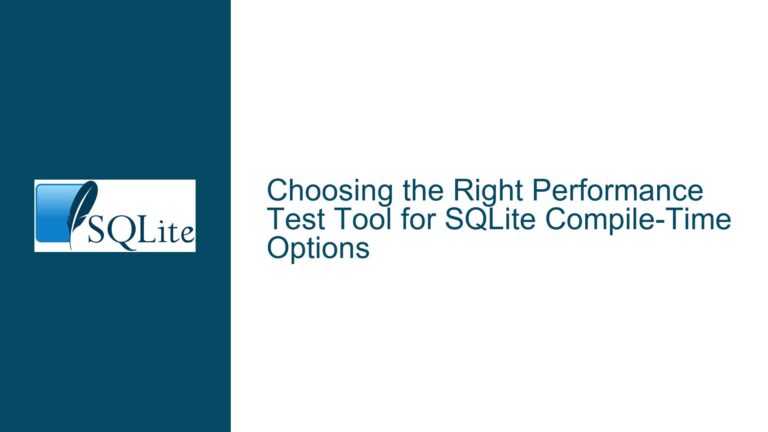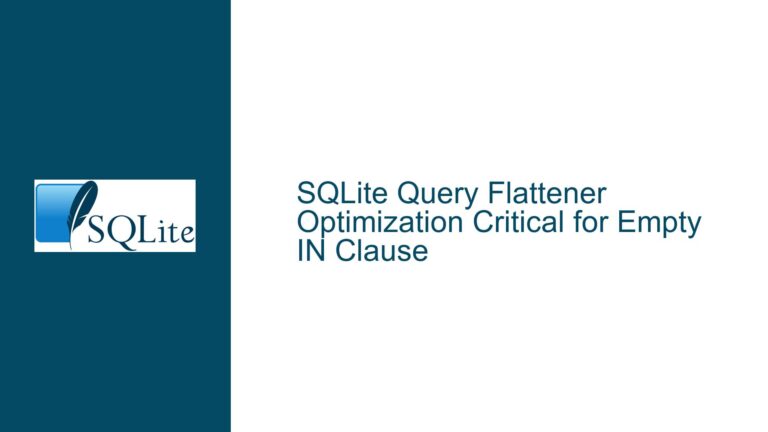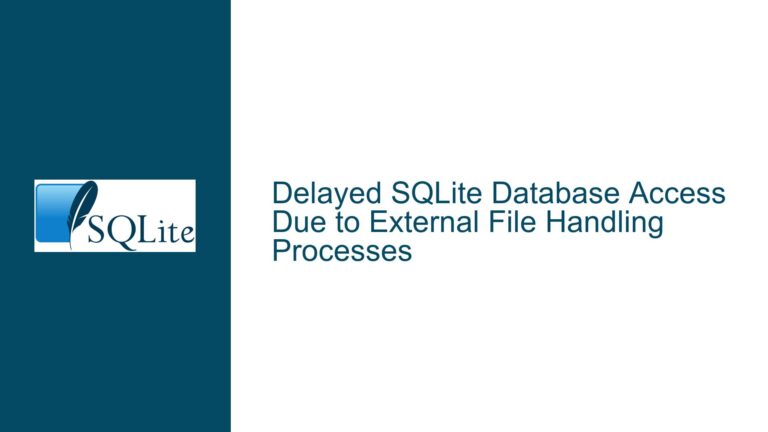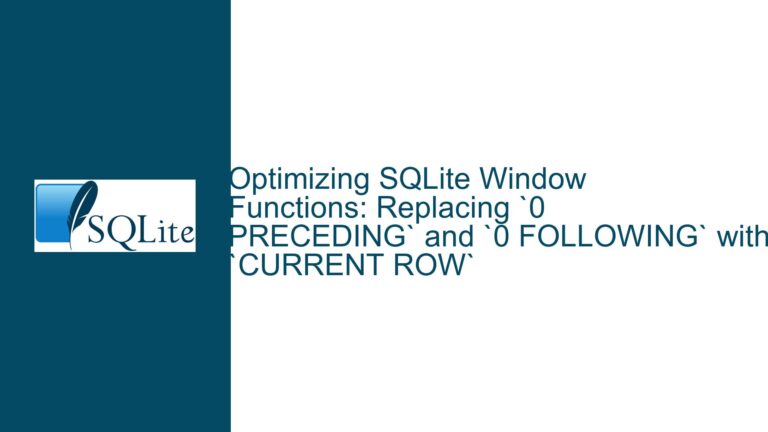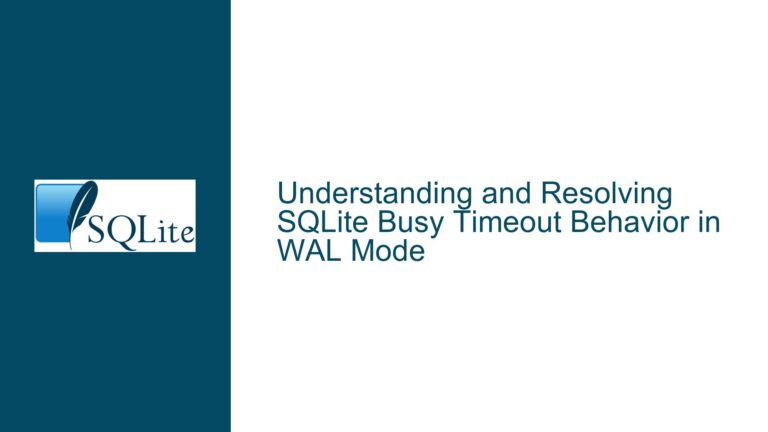When SQLite Readers Transition from WAL to Database File Content
Mechanism of WAL Checkpointing and Reader Visibility
Issue Overview
The core issue revolves around determining when SQLite readers stop relying on the Write-Ahead Log (WAL) and instead retrieve data directly from the main database file. This is particularly relevant in scenarios involving partial checkpoints (e.g., passive checkpoints that do not fully complete) and long-running transactions. The confusion stems from the interplay between three components:
- The WAL file, which stores uncheckpointed changes.
- The main database file, which contains checkpointed data.
- The shared memory (SHM) file, which coordinates access to the WAL and tracks checkpoint progress.
The SQLite documentation states that readers first check the WAL for the latest version of a page prior to their transaction’s "end mark". However, if a passive checkpoint copies some pages to the database, subsequent readers might still see those pages in the WAL. This creates an apparent contradiction: How can readers transition to using the database file if the WAL still contains valid, checkpointed pages?
The resolution lies in understanding how the WAL index (managed via the SHM file) and transaction snapshots work. Readers do not arbitrarily choose between the WAL and the database; their access is governed by metadata in the SHM file, which identifies which WAL frames have been checkpointed. A reader’s "end mark" is established at the start of its transaction, and the SHM’s nBackfill value (the highest frame fully checkpointed) determines whether a page is fetched from the WAL or the database.
Key Factors Influencing Reader Behavior in WAL Mode
Possible Causes
Misinterpretation of WAL Checkpointing Mechanics:
- Passive checkpoints copy WAL frames to the database but do not truncate the WAL. This means the WAL retains all frames, including those already checkpointed. However, the SHM file’s
nBackfillvalue is updated to reflect the last checkpointed frame. Readers use this value to determine whether a page is available in the database. - A truncate checkpoint (e.g.,
PRAGMA wal_checkpoint=TRUNCATE) removes checkpointed frames from the WAL, but it can only proceed if no active readers reference the WAL.
- Passive checkpoints copy WAL frames to the database but do not truncate the WAL. This means the WAL retains all frames, including those already checkpointed. However, the SHM file’s
Transaction Snapshot Isolation:
- Readers operate on a snapshot of the database state as of the transaction’s start. This snapshot includes the
mxFrame(highest valid WAL frame at transaction start) andnBackfill(highest checkpointed frame). Pages modified in WAL frames ≤nBackfillare read from the database; those in frames >nBackfillbut ≤mxFrameare read from the WAL.
- Readers operate on a snapshot of the database state as of the transaction’s start. This snapshot includes the
Checkpoint Starvation:
- Long-running readers prevent checkpoints from completing, as checkpoints cannot advance
nBackfillbeyond the oldest reader’smxFrame. This forces subsequent readers to continue using the WAL for pages modified after the stalled checkpoint.
- Long-running readers prevent checkpoints from completing, as checkpoints cannot advance
WAL Index Lookup Optimization:
- The
sqlite3WalFindFramefunction consults the SHM’s WAL index to locate the latest version of a page. If the page’s last modification is ≤nBackfill, the reader skips the WAL and fetches the page directly from the database.
- The
Resolving Reader-WAL-Database Interactions: A Technical Deep Dive
Troubleshooting Steps, Solutions & Fixes
1. Diagnosing Checkpoint Progress and Reader Dependency
Step 1: Inspect Checkpoint State
UsePRAGMA wal_checkpoint;to retrieve the checkpoint status:busy: Checkpoint is blocked by a writer.checkpointed: Number of frames checkpointed.log: Size of the WAL in pages.
A large gap betweencheckpointedandlogindicates checkpoint starvation.
Step 2: Identify Active Readers
Querysqlite3_snapshot_getto list active snapshots. Long-lived snapshots (e.g., open read transactions) block checkpoints from truncating the WAL.Step 3: Analyze SHM Metadata
The SHM file contains critical fields:nBackfill: Last frame fully checkpointed.mxFrame: Last valid WAL frame.aReadMark[]: Per-connection read markers.
Tools likesqlite3_analyzeror custom scripts can parse the SHM to identify readers blocking checkpoints.
2. Forcing WAL Truncation Safely
Solution 1: Use
PRAGMA wal_checkpoint=RESTART
This initiates a restart checkpoint, which:- Copies all checkpointable frames to the database.
- Resets the WAL to a new generation, discarding old frames.
Restart checkpoints require exclusive access to the WAL, so they may block briefly.
Solution 2: Minimize Reader Transaction Lifetimes
Ensure read transactions (even implicit ones inREAD COMMITTEDmode) are short-lived. Long-running queries or unclosed transactions preventnBackfillfrom advancing.Solution 3: Leverage
SQLITE_CHECKPOINT_PASSIVE
Passive checkpoints run in the background without blocking writers. While they do not truncate the WAL, they incrementally updatenBackfill, allowing newer readers to transition to the database for checkpointed pages.
3. Addressing Checkpoint Starvation
Fix 1: Monitor and Alert on WAL Growth
Track WAL file size (sqlite3_wal_checkpointor filesystem monitoring). Sudden growth may indicate blocked checkpoints.Fix 2: Use
sqlite3_interruptto Time Out Long Queries
Implement query timeouts to prevent indefinite blocking of checkpoints.Fix 3: Optimize Schema and Queries
Reduce lock contention by avoiding long-running writes and optimizing indexes.
4. Advanced: Direct WAL Index Manipulation (For Developers)
Intervention 1: Custom Checkpoint Triggers
Usesqlite3_wal_hookto implement custom checkpointing logic, e.g., forcing a checkpoint after a threshold number of frames.Intervention 2: Snapshot Synchronization
Usesqlite3_snapshot_opento coordinate reader snapshots with checkpointing, ensuring readers do not reference stale WAL frames.
Final Summary
Readers transition from the WAL to the database file based on the nBackfill value in the SHM file, which reflects the progress of checkpoints. Even though passive checkpoints do not truncate the WAL, they update nBackfill, directing new readers to use the database for checkpointed pages. The apparent contradiction in the documentation arises from conflating physical WAL presence with logical visibility governed by the SHM. By aligning reader snapshots with checkpoint progress and minimizing transaction lifetimes, developers can ensure efficient WAL management and prevent checkpoint starvation.

